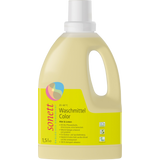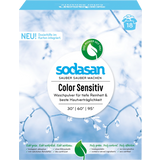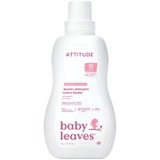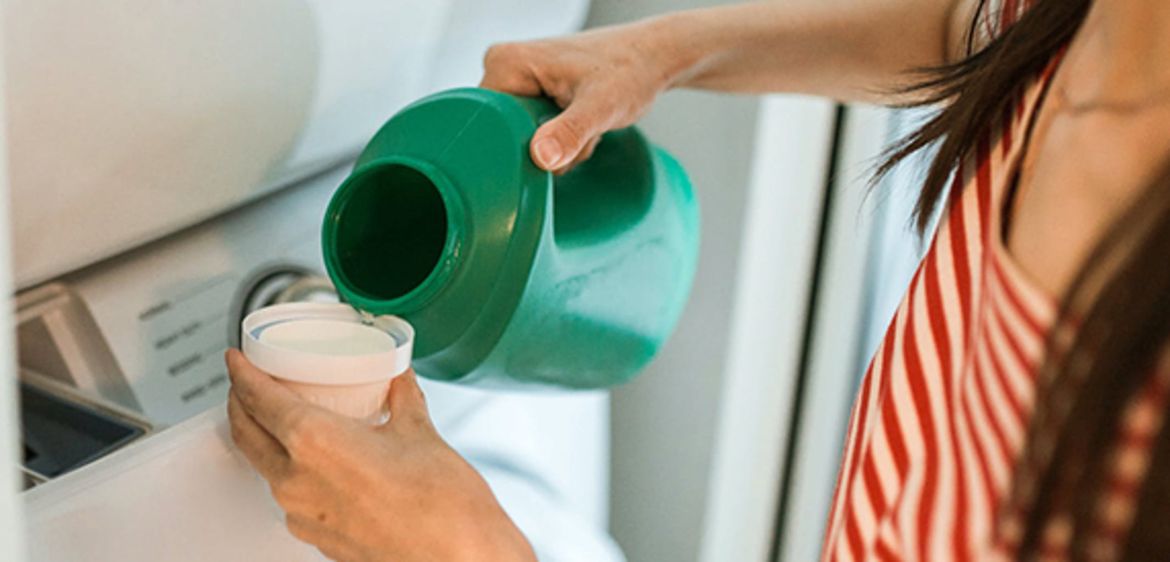How To: Laundry Detergent Dosage
Does the laundry in your closet smell strange, maybe even rancid though it is freshly washed?
Laundry taking on an unpleasant odour, even after being freshly washed, can be a result of many factors:
- washing too much laundry per cycle
- using too much or too little detergent may lead to unpleasant odour formation
Too much laundry detergent
Think that using more than the required amount of laundry detergent will result in super-clean results? Think again, this is unfortunately not the case. Using too much detergent at any one time is evident through the excess lather formation during the washing cycle. Oftentimes, the unpleasant odour is not noticeable until much later.
Using too much detergent means that there are not sufficient dirt or grease particles that bind to the many surfactants (active surfactants found in the detergent). These numerous, unbound surfactant molecules remain in the foam and end up settling on the fabrics because they cannot be complete rinsed off. Sometime after the drying process is complete, these organic surfactant molecules begin to decompose. This decomposition process exudes an unpleasant, rancid odour - even when the laundry is washed and ironed - which lingers in the wardrobe.
Too little laundry detergent
Regretfully, using an insufficient amount of laundry detergent can have side effects too and may lead to unpleasant odours on fabrics and linger in the wardrobe - mainly because the laundry is not cleaned properly. Using too little laundry detergent means that there is not a sufficient amount of molecules that bind the dirt or grease particles to dissolve them. This is noticeable when the lather formation in the washing machine is low. As a result, dirt remains in the water and redeposited onto the textiles during the rinsing process. An unpleasant odour is formed during the decomposition process of these molecules on dry laundry.
Good news: it's not rocket science
Using the correct amount of detergent when cleaning the laundry is not rocket science. Each manufacturer indicates recommended dosage instructions on the packaging which generally takes into account the amount of laundry, water hardness and degree of dirt. These instructions should be followed to avoid any unpleasant surprises. It is useful to know the water hardness of the region in which you live to achieve the best results. It is also vital not to overload the washing machine. This hinders the detergent from circulation efficiently which leads to the laundry not being cleaned and rinsed as it should. A big load of laundry can also mean that the amount of laundry detergent will not suffice to effectively clean the fabrics.
General rule of thumb: Less is more, however, this refers to the amount of laundry being treated. Less detergent is needed when a load of laundry is not too big making it easier to use the correct amount of detergent.
If unsure whether the amount of detergent used is sufficient, select an additional rinse cycle to ensure that the laundry is properly rinsed and, therefore, clean. This setting is available on most conventional washing machines. Another option would be to use a rinse aid specially formulated for laundry: the slightly acidic solution helps to rinse the detergent residues and neutralise the laundry whilst reviving the colours at the same time.
Related products
-
 4.8 (130)
4.8 (130)Sonett Color Laundry Detergent - Mint & Lemon, 1,50 l
-10%- With organic plant oil soap
- Also for sportswear
- 20°C - 60°C
€ 6,73 € 7,49 (€ 4,49 / l)Delivery by April 18
-
 4.3 (9)
4.3 (9)Sodasan Colour Sensitive Washing Powder, 1,01 kg
-10%- Temperature range: 30 - 95°C
- Suitable for all kinds of fabrics, excl. wool & silk
- Fragrance-free formula
€ 7,19 € 7,99 (€ 7,12 / kg)Delivery by May 13
-
 4.5 (13)
4.5 (13)Attitude Sweet Lullaby Baby Liquid Detergent, 1,04 l
-11%- Natural ingredients
- Pleasant scent
- Biodegradable
€ 11,61 € 12,99 (€ 11,16 / l)Delivery by April 18


